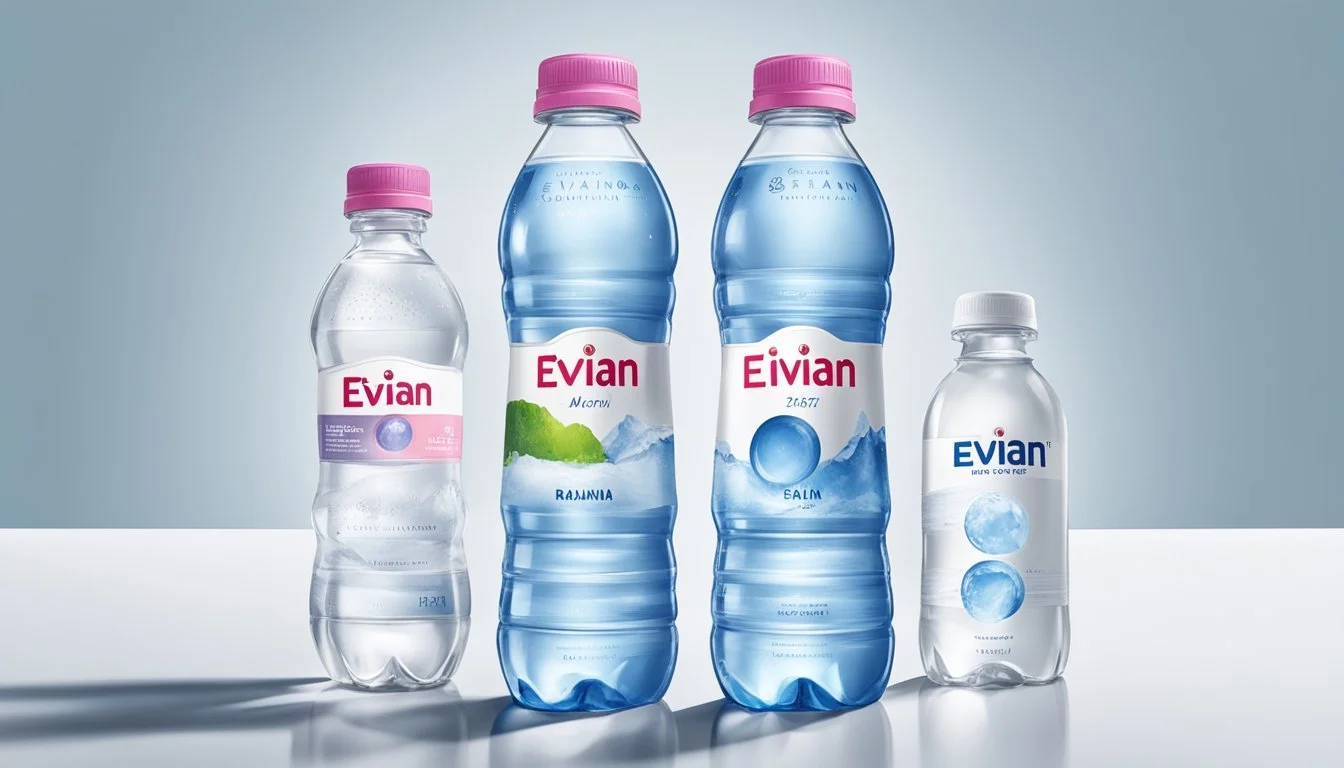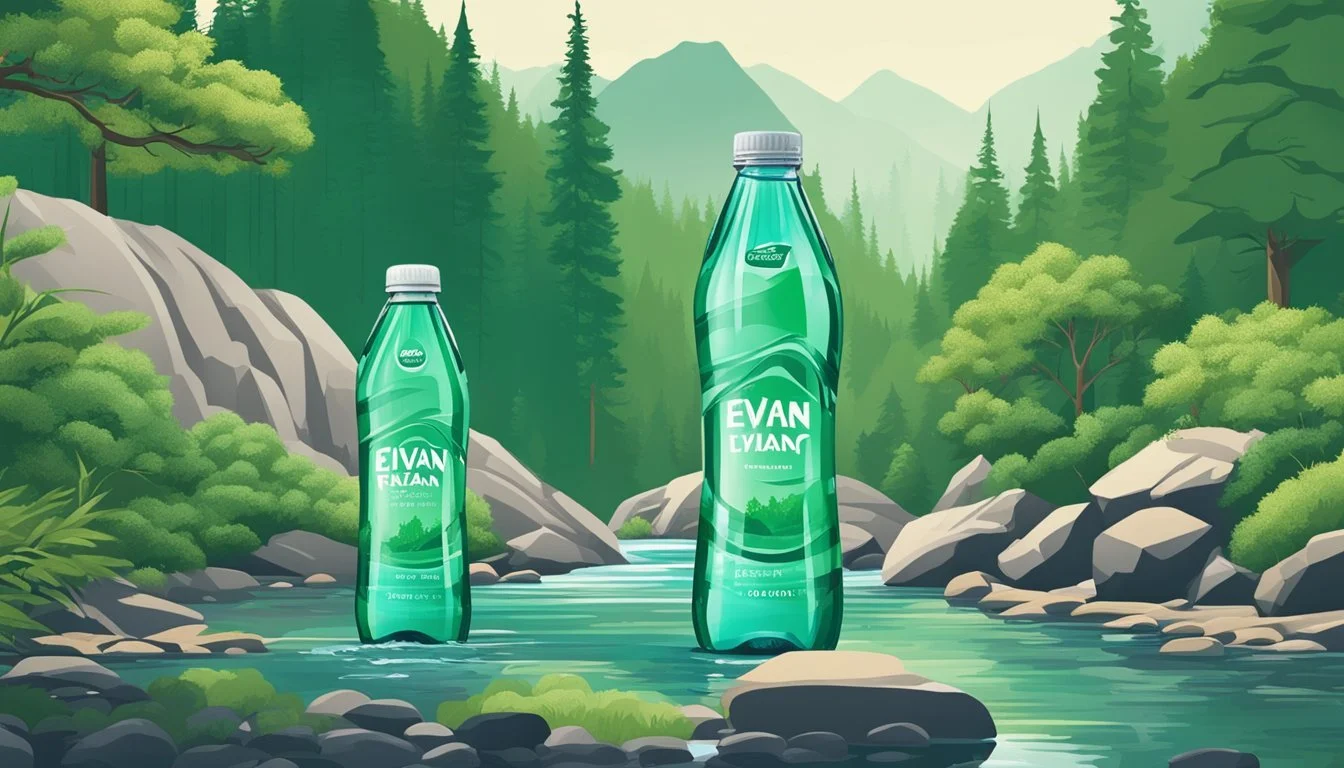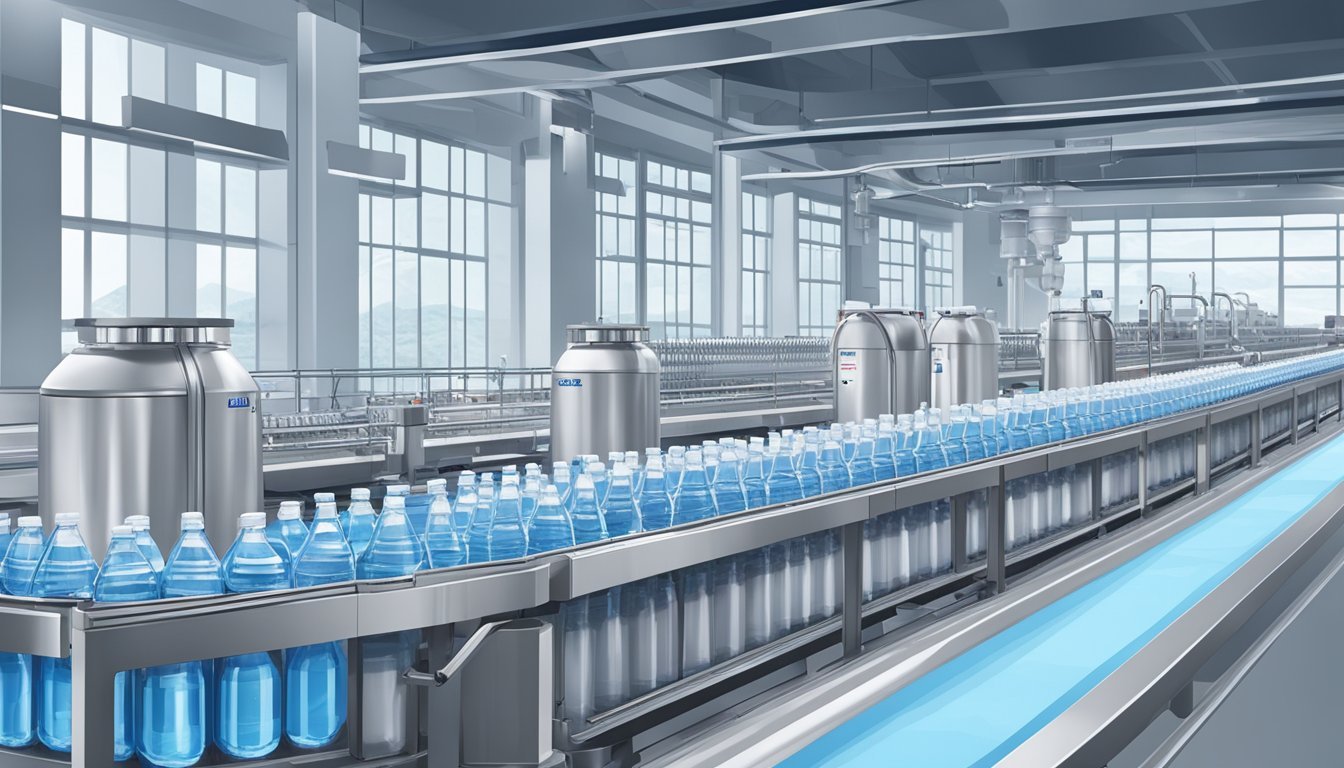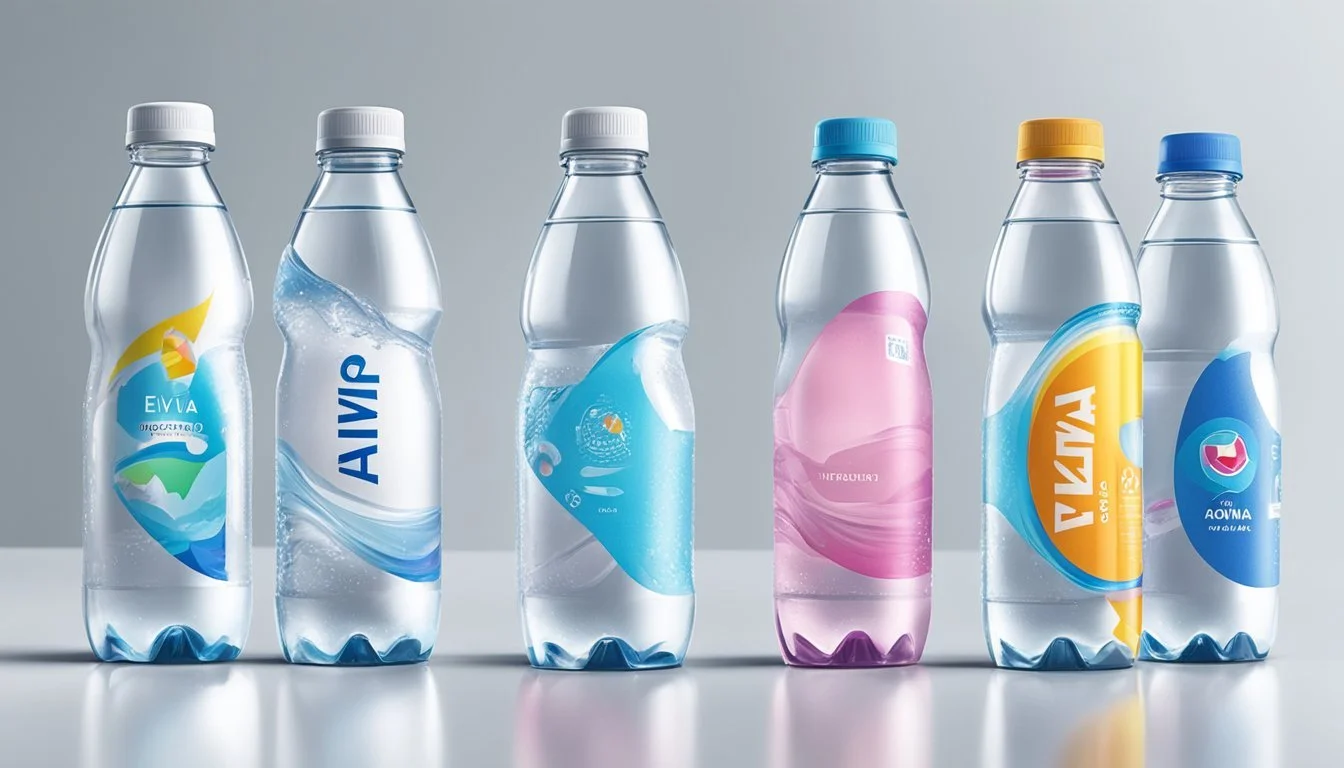Evian vs. Ramona
A Clear Comparison of Bottled Water Choices
Evian and Ramona are two popular choices in the bottled water market, each with its own set of characteristics that appeal to different consumers. For those seeking a light and crisp taste, Evian, sourced from the French Alps, often stands out due to its subtle, mineral-rich profile. On the other hand, Ramona, with its focus on purity and affordability, is a go-to option for many who prioritize cost and dependability.
Hydration is essential, and the quality of bottled water can significantly affect one’s daily water intake. While Evian boasts a rich history and a premium image, Ramona provides a practical solution without compromising on safety and cleanliness. Choosing between Evian and Ramona often comes down to personal preference and priorities such as taste, mineral content, and price.
Understanding these differences can make it easier to decide which bottled water fits your lifestyle best. Whether you prefer the refined taste of Evian or the reliable simplicity of Ramona, making an informed choice ensures you stay well-hydrated with a product that meets your needs.
Comparing the Origins
Evian and Ramona derive their unique qualities from their distinct natural water sources. The French Alps and underground springs influence the taste and mineral content of each water.
Evian's French Alps Source
Evian's water originates from Cachat Spring in the French Alps. This pristine source contributes to its world-renowned quality. The journey begins as rain and melting snow filter through layers of glacial sand, a natural filtration system that purifies the water over 15 years.
Calcium: Approx. 80 mg/L
Magnesium: Approx. 26 mg/L
Sodium: Low concentration (~6.5 mg/L)
This precise natural filtering process and mineral-rich soil impart a consistent, smooth taste, highly favored by many. Evian maintains stringent environmental practices to protect this delicate ecosystem.
Ramona's Underground Spring
Ramona water is sourced from an underground spring nestled in pristine landscapes. This subterranean spring is shielded from surface contamination, ensuring pure water without external pollutants.
Mineral Composition:
Moderate Calcium: Contributes to taste
Bicarbonate: Approx. 250 mg/L
Low Sodium: Maintains a balanced flavor profile
Ramona's source is characterized by its minimal human interference, preserving the natural balance. The underground spring passes through ancient rock formations, enriching the water with distinct minerals. The localized origin exemplifies commitment to quality and sustainability.
Water Quality and Purity
This section delves into the essential aspects of water quality and purity for both Evian and Ramona. It covers areas like mineral content, filtration processes, and safety standards.
Mineral Content and Health Benefits
Evian and Ramona bottled waters differ significantly in their mineral content. Evian water originates from the French Alps and is naturally filtered through glacial sand.
Mineral Evian (mg/L) Ramona (mg/L) Calcium 80 40 Magnesium 26 15 Potassium 2 1 Sodium 6.5 10
Evian contains higher levels of calcium and magnesium, which are beneficial for bone health and muscle function. Ramona, while lower in these minerals, provides similar benefits with slightly differing mineral concentrations.
Filtration and Purification Processes
Evian takes pride in its natural filtration process that occurs over 15 years through multiple layers of glacial sand, ensuring a high purity level.
Ramona, on the other hand, uses advanced filtration techniques including reverse osmosis and carbon filtration. This process removes most contaminants, resulting in purified water.
Process Evian Ramona Natural Filtration Yes No Reverse Osmosis No Yes Carbon Filtration No Yes
The reverse osmosis used by Ramona effectively eliminates impurities but also strips away some beneficial minerals.
Assessing Contaminants and Safety Standards
Both brands adhere to stringent safety standards to ensure their products are free from harmful contaminants.
Evian complies with European FDA regulations and regularly tests for microplastics and PFAS chemicals.
Ramona meets U.S. FDA regulations and employs rigorous testing to monitor for contaminants such as lead and chlorine.
Contaminant Tested Evian Ramona PFAS Chemicals Yes Yes Microplastics Yes Yes Lead Yes Yes Chlorine Yes Yes
Both ensure their water is safe for consumption, matching international safety standards.
Taste Profile and Water Sommelier Insights
When comparing Evian and Ramona bottled waters, the subtle differences in taste and minerality play a significant role. Water sommeliers often emphasize these factors, giving us a comprehensive analysis of each brand’s unique characteristics.
The Role of Minerality in Taste
Minerality is a key factor in defining the taste of bottled water. Evian, sourced from the French Alps, has a distinct mineral composition that includes calcium, magnesium, and bicarbonate.
This gives it a smooth, velvety texture and a notable aftertaste. Water sommeliers often appreciate Evian for its well-balanced profile, making it a favorite among those seeking a full-bodied, alkaline water experience.
Ramona, on the other hand, may have a balance of minerals but varies greatly depending on its source. Its taste can be more neutral, less pronounced in minerality, which might appeal to those preferring a less intense flavor.
Palate Preferences: Still vs. Sparkling
Consumer preferences between still and sparkling water can also influence choice. Evian is primarily known for its still water, emphasizing natural purity from its alpine source.
This makes it a popular choice for those who prefer a clean, unaltered taste that pairs well with a range of foods and beverages, including coffee.
Ramona offers both still and sparkling options, each with distinct tasting notes. Sparkling variants bring a lively, effervescent experience, catering to those who enjoy bubbles.
Ultimately, choosing between Evian and Ramona may boil down to personal preference, influenced by how each brand’s still or sparkling options align with individual taste and lifestyle preferences.
Environmental Impact and Sustainability
Choosing bottled water involves considering its environmental impact and sustainability. Key factors include packaging materials and the ecological footprint of water sourcing.
Plastic vs. Eco-Friendly Packaging
Evian predominantly uses plastic bottles, which contribute to environmental pollution and waste. While they are BPA-free, plastic bottles are still a major concern due to their long decomposition time and potential for microplastic contamination in ecosystems.
Ramona takes a more environmentally friendly approach, often opting for boxed water or using bottles made from recycled materials. This reduces their carbon footprint and helps lower plastic pollution.
Eco-friendly packaging choices help minimize waste and encourage recycling practices. Sustainable packaging options are vital in reducing the environmental impact of bottled water products.
Water Source Sustainability
Evian sources its water from a natural spring in the French Alps. They claim to use sustainable practices to maintain the purity and balance of the ecosystem surrounding the spring. This includes protecting the recharge area to ensure long-term water quality.
Ramona, on the other hand, varies its sources, but often highlights a commitment to environmentally responsible practices. This includes protecting local water sources and ensuring that extraction does not deplete the natural reserves.
Consumers benefit from choosing brands that prioritize water source sustainability. Sustainable management of water resources helps preserve natural springs and prevents over-exploitation, ensuring that the bottled water industry can continue to provide high-quality water without harming the environment.
Health Considerations and Dietary Importance
The comparison between Evian and Ramona water focuses on aspects like hydration, fluid balance, electrolytes, and pH levels. Understanding these can help evaluate which option may be better for health and dietary needs.
Hydration and Fluid Balance
Proper hydration is essential for maintaining fluid balance in the body. Both Evian and Ramona water are effective at providing hydration, though their mineral content may differ.
Evian water is known for its consistent mineral profile, containing calcium and magnesium which aid in fluid retention and bodily functions. Ramona water, too, provides hydration, though specific details on its mineral composition are less widely reported.
Electrolytes and Body Function
Electrolytes are crucial for muscle function, nerve signaling, and overall fluid balance. Evian water contains essential electrolytes like calcium and magnesium, which support these functions.
It has about 80 mg/L of calcium and 26 mg/L of magnesium. Ramona water can also contain electrolytes, but the specifics can vary depending on the source.
pH Balance and Acidity
The pH level of water can affect its acidity and how it interacts with the body. Evian water boasts a slightly alkaline pH of 7.07, which can help neutralize acidity in the body.
Ramona water's pH level can vary, but it generally aims for a neutral pH close to 7. Maintaining a balanced pH can be beneficial, especially for those with dietary considerations related to acidity.
Innovations and Technological Advances in Bottling
Innovations in the bottling industry have focused on advanced filtration techniques and unique bottling processes. These advancements ensure higher quality and improved safety for consumers.
Advanced Filtration Techniques
Advanced filtration is essential for producing high-quality bottled water. Techniques like carbon filtration and ultraviolet light treatment have become standard. Carbon filtration removes impurities and contaminants, enhancing taste and clarity.
Ultraviolet light is used to sterilize water, ensuring it is free from bacteria and viruses. Hydro-7 technology from CORE Hydration is another notable advancement, utilizing a seven-stage filtration process to achieve optimal purity.
Fiji Water uses natural filtration through volcanic rock, enhancing mineral content and purity. Evian, known for its mineral-rich profile, benefits from permeable layers of glacial sand, naturally filtering the water. These methods ensure the water is safe while maintaining essential minerals.
Unique Bottling Processes
The bottling process impacts the quality and sustainability of bottled water. Many companies now prioritize vapor-distilled water, where water is evaporated and condensed to remove impurities. This technique is employed by Glacéau Smartwater, ensuring high purity levels.
Eco-friendly bottling is gaining traction, with companies reducing plastic usage and employing sustainable materials. Evian has committed to using 100% recycled PET by 2025. Ramona uses innovative, lightweight bottles to reduce carbon footprint.
San Pellegrino’s use of pressure-resistant bottling ensures its signature effervescence is preserved. Such unique processes not only improve water quality but also address environmental concerns and consumer preferences.
Comparative Cost Analysis
In comparing Evian to Ramona, cost considerations focus on factors like price points and brand positioning. Both brands aim to offer distinct value propositions that cater to different market segments.
Price Points and Value for Money
Evian and Ramona cater to different price-sensitive markets. Evian is priced as a premium bottled water, with a 1-liter bottle approximately costing $1.89.
For smaller 500 ml bottles, the price can be around $1.69. This positions Evian among other high-end brands such as Voss and Fiji. Ramona, while not as prominent in the premium category, is priced closer to everyday brands like Pure Life or Poland Spring.
This makes Ramona a more accessible option for consumers seeking value without extra cost.
Luxury vs. Accessible Brands
Evian markets itself as a luxury brand sourced from the French Alps, targeting consumers willing to pay more for perceived quality and purity.
Comparable luxury brands include Acqua Panna and Icelandic Glacial, which also emphasize their natural sources and stringent quality standards. Evian's pricing reflects this premium positioning.
Ramona, on the other hand, aims to provide quality drinking water at more accessible price points. Its target market includes individuals looking for reliable bottled water options over prestige branding.
This approach is similar to brands like San Pellegrino and Mountain Valley Spring Water, albeit with less focus on luxury.
By maintaining competitive pricing, Ramona remains a viable choice for consumers seeking a balance between cost and quality.
More About Evian
Evian vs Mountain Valley Spring Water: Which Bottled Water is Better?
Evian vs Richard's Rainwater: Which Bottled Water is Better?
Evian vs Whole Foods Italian Still Mineral water: Which Bottled Water is Better?







